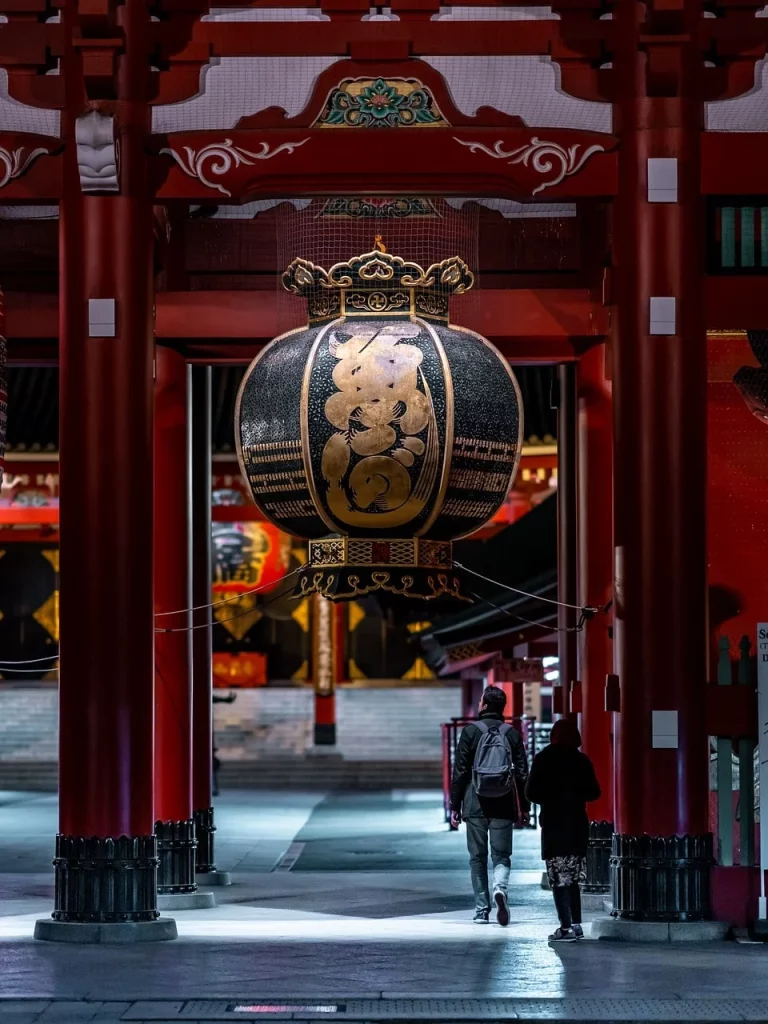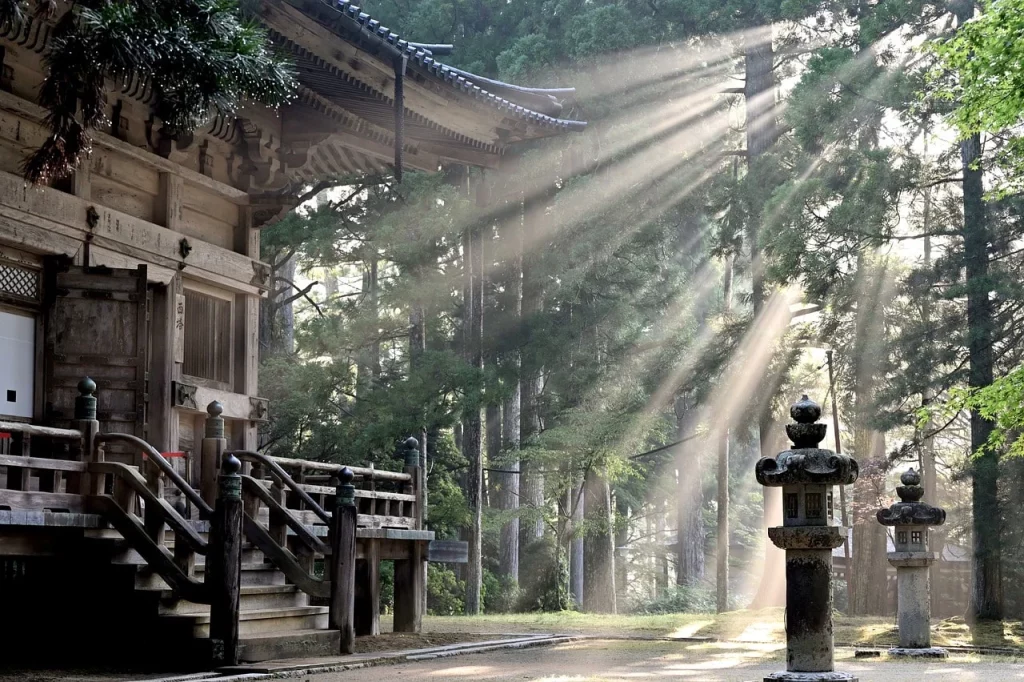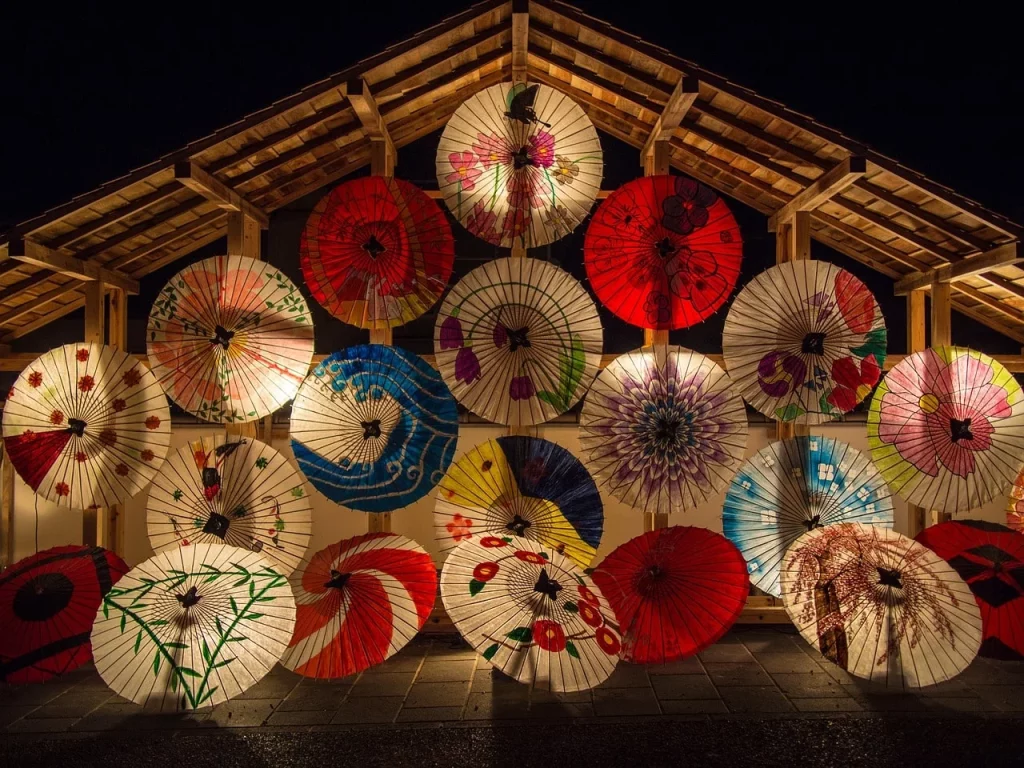Have you ever wondered what makes Japan such a unique blend of tradition and cutting-edge modernity? From the serene beauty of cherry blossoms in full bloom to the bustling streets of Tokyo lit by neon signs, Japan is a country of contrasts that fascinates millions of visitors each year.
In our exploration of some amazing Japan facts, we’ll take you on a journey through the heart of these islands, revealing secrets and surprises that showcase the true spirit of Japan. Get ready to discover a land where ancient gods mingle with cutting-edge technology and sumptuous cuisine awaits around every corner.
To understand Japan, you need to appreciate its beauties, its dangers, and its paradoxes.
John McWhorter
Japan Facts
Dive into surprising facts, from ancient wonders to modern marvels. But remember, a ninja-level quiz awaits at the end. Ready to show your true Japan expertise? Read on!
- The world’s oldest company, Kongo Gumi, was established in 675 AD in this country, operating for over 1,400 years before becoming a subsidiary in 2006.
- A vending machine exists for every 29 people, offering items from eggs to umbrellas.
- Square watermelons are cultivated here for easier stacking and storage.
- The concept of ‘mottainai’ reflects a deep cultural aversion to wastefulness, embodying the practice of recycling and conserving.
- Akihabara Electric Town, a world-renowned district, offers an eclectic mix of electronics, manga, and anime culture.
- There are more pets than children and the country has a booming industry for pet luxury goods.
- Ryokans or traditional inns, offer a glimpse into the country’s hospitality and ancient way of life.
- Jigokudani Monkey Park is famous for snow monkeys that enjoy soaking in natural hot springs.
- Japanese trains are some of the most punctual in the world, with an average delay of just 18 seconds.
- Forest bathing, or ‘shinrin-yoku’, is a national pastime, emphasizing the health benefits of being in nature.
- Capsule hotels, offering compact, pod-like accommodations, originated here as a solution for budget travelers.
- Ikigai is a concept meaning “a reason for being,” emphasizing a balanced, fulfilling life.
- The Fushimi Inari-taisha shrine in Kyoto features thousands of vermilion torii gates, each donated by a business for good fortune.

- The annual Sapporo Snow Festival showcases massive ice and snow sculptures.
- Sumo wrestling, the national sport, has a history spanning over 1,500 years.
- Cat cafés originated here, offering relaxation and companionship to patrons.
- Akihabara is not only an electronics hub but also the center of Otaku culture, catering to fans of manga, anime, and video games.
- The Blue Pond in Hokkaido changes color due to natural minerals and scientific phenomena.
- Hikikomori refers to individuals who withdraw from society, spending months or even years at home.
- The Ghibli Museum immerses visitors in the world of Studio Ghibli’s films and their unique animation style.
- Shinkansen or bullet trains, can reach speeds of up to 320 km/h (199 mph), linking major cities efficiently.
- Japan’s Tsukiji Fish Market was one of the largest seafood markets in the world before moving to Toyosu in 2018.
- The country experiences over 1,500 earthquakes annually due to its position on the Pacific “Ring of Fire.”
- Kintsugi, the art of repairing broken pottery with gold or silver, celebrates imperfections and the beauty of repair.
- Naoshima Island is known for its contemporary art museums, sculptures, and installations.
- The ancient capital, Kyoto, houses over 2,000 temples and shrines.
- Kanamara Matsuri, the Festival of the Steel Phallus, celebrates fertility and health.
- The Seto Inland Sea hosts the Triennale art festival, transforming the islands into outdoor art galleries.

- Fugu, or pufferfish, is a delicacy that can be fatally poisonous if not prepared correctly.
- Japan has a unique address system where streets often don’t have names and buildings are numbered based on the order in which they were constructed.
- The Tokyo Metropolitan Government Building offers one of the best free views of the city and, on clear days, Mount Fuji.
- Washlets, high-tech toilet seats with water sprays, and dryers are common features in homes and public restrooms.
- Nagasaki’s Dejima was the sole gateway for foreign trade and influence during the country’s period of isolation.
- There are more than a dozen words in Japanese to express rain, each reflecting specific types such as evening rain, soft rain, or heavy rain.
- Harajuku is known for its youth culture and fashion, often seen as the birthplace of many global fashion trends.
- The ‘yakuza’, Japan’s organized crime syndicates, have a complex relationship with society, sometimes seen as providing order and protection.
- Japanese onsen (hot springs) are celebrated for their therapeutic qualities and are an integral part of local tourism.
- Omotenashi describes the Japanese approach to hospitality, focusing on meticulous care and attention to guests’ needs.

- The Torii gate at Itsukushima Shrine appears to float on water at high tide, creating a stunning visual effect.
- Ukiyo-e or woodblock prints, greatly influenced European artists like Vincent van Gogh.
- Japan’s bullet trains have a dedicated cleaning crew that can clean an entire train in seven minutes during its turnaround.
- Tokyo’s Shinjuku Station is the world’s busiest railway station, handling over two million passengers daily.
- The Golden Pavilion, Kinkaku-ji, in Kyoto is covered in gold leaf, symbolizing purity and enlightenment.
- Amezaiku is the Japanese art of candy sculpting, creating intricate shapes like animals and flowers from heated sugar.
- Vending machines here sell hot cans of coffee, especially popular in the winter.
- Ramen museums celebrate the popular noodle dish, offering varieties from across the country.
- The Nara Deer Park is home to hundreds of freely roaming deer, considered messengers of the gods.
- Yayoi Kusama’s polka-dot art installations have gained international fame, with several dedicated exhibitions.
- The Cherry Blossom Forecast is a major national event, with meteorologists providing predictions for the best viewing times across the country.
- Japan’s Imperial Family is the oldest hereditary monarchy in the world, with historical records dating back to 660 BC.
Japan Myths

So, you’ve devoured some fun facts about Japan, its history, and its culture. But where does reality end and myth begin? We’re diving into the rabbit hole of Japanese folklore and separating truth from tall tales.
- Japan is Exclusively High-Tech
Despite the global admiration for its technological advancements, Japan cherishes its traditions deeply. High-tech cities like Tokyo contrast sharply with regions where traditional practices and lifestyles are preserved. This balance between the modern and the traditional is deeply ingrained in Japanese culture. - Sushi is Japan’s Most Popular Food
While sushi is internationally synonymous with Japanese cuisine, it’s not an everyday food. Rice, miso soup, and other dishes like ramen, curry, and bento boxes are more commonly consumed. Sushi is often enjoyed on special occasions rather than daily. - Japan is Exorbitantly Expensive
The perception that it is prohibitively expensive is not entirely accurate. While certain expenses, like housing in Tokyo, can be high, daily necessities, public transport, and dining out can be quite affordable compared to other developed countries. Budget-friendly options are widely available. - Everyone in Japan Practices Martial Arts
Martial arts are indeed an integral part of Japanese culture, but it’s a myth that all Japanese people practice them. Traditional arts like judo, karate, and kendo are taught and respected, but participation is not universal. Many people enjoy a variety of other sports and hobbies. - Japanese People are Reserved and Unfriendly to Foreigners
This misconception often arises from cultural differences. Japanese society values respect, politeness, and discretion, which can be mistaken for coldness. In reality, visitors are frequently met with kindness and a willingness to help, even if language barriers can make interactions challenging.
No products found.
Japan Quotes

From ancient wisdom to modern marvels, these quotes unveil the heart of Japan. Prepare to be surprised, inspired, and transported. Feel free to share yours in the comments so I can add them to the list as well.
If you wish to see the valleys, climb to the mountain top; if you desire to see the mountain top, rise into the cloud; but if you seek understanding, labor in Japan.
Kakuzo Okakura
Kakuzo Okakura, a Japanese scholar, emphasizes the depth of experience and understanding one gains from immersing oneself in Japanese culture and labor.
Japan never considers time together as time wasted. Rather, it is time invested.
Donald Richie
Donald Richie, an American author who spent much of his life in Japan, highlights the Japanese value of shared time, seeing it as a meaningful investment rather than wasted moments.
In Japan, old men are dangerous: you cannot tell what they will do next.
James A. Michener
James A. Michener, an American author known for his historical novels, humorously comments on the unpredictable nature of Japanese elders, hinting at their depth of wisdom and experience.
Japan is a world apart – a cultural Galápagos where a unique civilization blossomed, and thrives today in delicious contrast of traditional and modern.
Pico Iyer
Pico Iyer, a British-born essayist and novelist, captures the essence of Japan as a place of remarkable contrast, where ancient traditions coexist with futuristic modernity.
The Japanese have perfected good manners and made them indistinguishable from rudeness.
Paul Theroux
Paul Theroux, an American travel writer and novelist, offers a witty observation on the nuanced complexities of Japanese politeness, which can sometimes seem perplexing to outsiders.
Japan FAQ

Still got questions after the quotes? This FAQ has the answers. It’s the last section before the quiz, so read carefully if you want to ace it.
- Will Japan sink?
No, it will not sink. The idea may stem from its geographical location in a seismically active zone, which makes it prone to earthquakes and tsunamis. However, it is well equipped with advanced technology and infrastructure to mitigate these risks. The nation continues to stand strong, despite the natural challenges it faces. - Why did Japan bomb Pearl Harbor?
Japan bombed Pearl Harbor on December 7, 1941, as a preemptive action intended to prevent the U.S. Pacific Fleet from interfering with its planned military actions in Southeast Asia against overseas territories of the United Kingdom, the Netherlands, and the United States. This attack led directly to the United States’ entry into World War II. - How does Japan celebrate Christmas?
In Japan, Christmas is more of a commercial and romantic celebration than a religious one. It’s marked by festive decorations, illumination events, and Christmas markets. Christmas Eve is often celebrated with romantic dinners and exchanges of gifts among couples, while Christmas day is popular for eating Christmas cake, a sponge cake decorated with strawberries and whipped cream. - Are Japan and China allies?
Japan and China are not allies; they have a complex relationship shaped by a long history of both cooperation and conflict. While they engage in significant economic and trade activities, tensions persist due to territorial disputes and historical issues. Diplomatic efforts will continue to manage these challenges and promote regional stability. - What is Japan famous for?
It is renowned for its rich culture, technological innovations, and natural beauty. It’s known for its traditional arts, such as tea ceremonies, calligraphy, and flower arranging, as well as its pop culture, including anime and manga. Japan’s advancements in technology, particularly in robotics and electronics, are globally recognized. The country’s cuisine, especially sushi, and its scenic landscapes, from Mount Fuji to its cherry blossom-filled parks, also contribute to its fame.
No products found.
Japan Quiz

Welcome to our quiz on Japan, where the stakes are high and the sushi is always rolling. Fail to answer correctly, and you might find yourself transformed into a sumo wrestler’s mawashi (that’s a sumo belt, in case you were wondering). Let’s roll!
Conclusion
Every corner of Japan offers an opportunity for discovery. Whether it’s the culinary adventures that await in every region, each with its own specialty, or the endless variety of landscapes, from snowy mountains to tropical beaches, it is a treasure trove of experiences. It invites visitors to explore, learn, and be amazed. With so much to see and do, one visit is never enough.
Let’s close this journey with a question: If you could have a magical train ticket that takes you to any place in Japan instantly, where would your first stop be, and why would it be the nearest ramen shop? Let me know in the comments.


